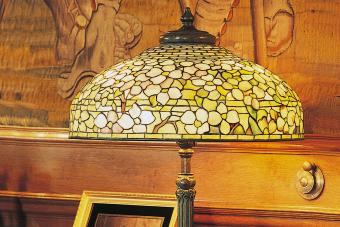
Wallace sterling silver flatware is an American classic, offering a range of patterns to suit every taste, from the ornate, like its Sir Christoper or Grand Baroque lines, to the simple, such as Cardinale or Palatina.
Early History
Robert Wallace began his career as an apprentice for Meriden Brittania Company in Connecticut, then one of the preeminent silver makers in Northeast America. In 1833, Wallace left Meriden Brittania to start his own firm, specializing just in spoons.
Wallace's main early commercial successes weren't sterling silver flatware, but rather, the more affordable alternative for the middle and lower-middle classes, "german silver", a nickel and copper alloy that contains no silver but imitates its look and feel very well. He expanded into complete place settings instead of just spoons and began extensive partnerships and production lines, becoming one of the largest flatware makers in the world. The company changed names several times, based on new partnerships and enterprises.
It wasn't until 1875 that Wallace, then 60 years old, introduced the first Wallace sterling silver flatware lines: Hawthorne, The Crown, and St. Leon. The company was then known as R. Wallace and Sons Manufacturing Company.
After Wallace's Death
Robert Wallace died in 1892 and his sons (as well as his sons-in-law) led the business' continuing expansion in german silver, silver plated stainless steel, and sterling silver. After focusing on production capacities, the company expanded aggressively into silver design in the 1930s, introducing several new lines, the following of which are still available today.
1930s Designs
1934 saw the first production of Rose Point, an elegant floral style that suggests lace or needlepoint work. The rose design appears to be suspended over a sunken area in the handle, producing a very striking effect. Wallace frequently used rose motifs, such as the 1962 Royal Rose pattern and the 1938 silver plate Roseanne.
Two years later, in 1936, Wallace released Sir Christopher, inspired by Sir Christopher Wren's architecture. The pattern features grapes on the knives, fruit on the forks, and a rose on the spoon, all meant to invoke the richness of an English country estate.
Stradivari, following in 1937, is a much simpler design, with subtle, only slightly curving lines on the edges. It makes a tremendous contrast to Grand Baroque, released in 1941.
Wallace Grand Baroque
This design established Wallace not just as a producer but as a designer and is still one of the best-selling sterling silver designs in the United States. It is a very formal three-dimensional acanthus leaf design strongly influenced by the French late Renaissance and early Baroque style but is not as cumbersome to handle as its rich and heavy design suggests.
Wallace celebrated its 65th anniversary with a special release of a 90-piece edition. It also used the pattern for additional silver serving products, such as bowls, tea sets, coffee urns, and dishes. There are even Wallace Grand Baroque special edition Christmas ornaments, bells, and necklaces in sterling or sterling plate.
After Grand Baroque
Grand Baroque succeeded beyond the company's wildest expectations and the revenue funded a new series of acquisitions as well as two new Wallace sterling silver flatware designs, the 1942 Grand Colonial, a very simple and elegant design inspired by Colonial period pewter and silver, and the 1950 Romance of the Sea, with a stylized sea shell design that could be either formal or less formal.
In 1959, Hamilton Watch Company acquired Wallace Silversmiths (as it was then known), and was itself acquired by Katy Industries in 1983. In 1986, Syratech acquired Katy Industries and moved Wallace to East Boston, near the original seat of American silver design and manufacturing.
Purchasing Wallace Sterling Silver Flatware
Most Wallace designs, whether still in production or discontinued, are available from silver specialists such as Replacements. eBay shopping is another source, but whether you buy or sell on eBay, beware of shipping charges for sterling silver. Antique stores have the advantage of letting you inspect before you buy and not having to worry about shipping costs.
Prices depend somewhat upon the antique and collectibles market (more so for Wallace's silver plate and stainless pieces) and somewhat upon the metal value of sterling silver. Antiques price guides can help you make a ballpark estimate of how much you'll pay.
Be sure to check for hallmarks. Wallace had many imitators, particularly of the Grand Baroque series, and these are quite common. Also, make sure to check the quality mark to ensure that you are truly buying Wallace silver, not stainless, german silver, or silver plate. Antique reproductions meant to deceive may use false hallmarks, however.
Genuine antique Wallace silver will have a patina of use and frequent gentle polishing. Any particularly bright spots might indicate that a scratch or dent has been polished or burnished out. Gold washed (silver given a very thin gold electroplating) pieces show wear much more easily than silver, so particularly even tones on an antique piece indicate that either the setting was not used or, more likely, it was rewashed.







